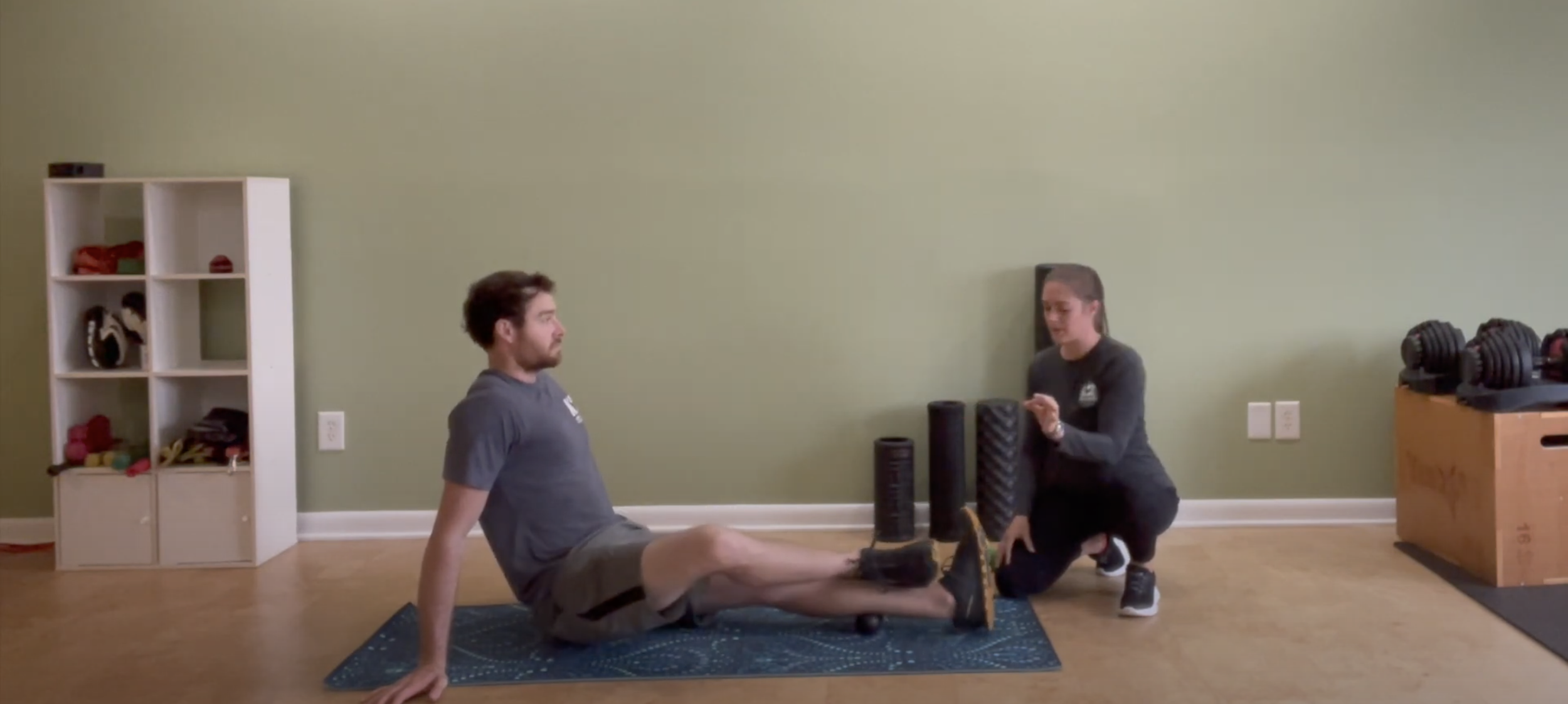Mobility
Info & Follow Along Videos
Mobility is the ability of a joint to move freely, without pain, through its’ range of motion AND use the surrounding muscles to then stabilize the joint. This is critical in maintaining and improving your body’s capabilities and fitness level. It is different than flexibility, which is just the ability to stretch to a certain point. Mobility is active flexibility or the ability to use and move at the end ranges of your flexibility.
Flexibility = stretching muscles. Mobility = ROM of joints, flexibility & stability of muscles.
To improve your mobility, your flexibility must also improve. However, only stretching will only improve flexibility and extreme flexibility alone can lead to instability.
When people think mobility they often equate it with foam rolling. What is that and why does it work? Using tools like foam rollers and balls fall under the category of Self Myofascial Release (SMR). SMR uses tools to apply pressure to the fascia (surrounding your muscles) and the neural pathways within them. Fascia surround every muscle which then create long fascial lines connecting everything within your body. Often we’ll say, “it’s all connected” when explaining why a change in one part of your body can cause pain or change in a seemingly unrelated body part - this is in part due to fascia. Fascia gets tight/stiff with lack of exercise, repetitive movements, dysfunctional movement patterns, and poor posture. Applying pressure to the fascia helps by bringing additional blood (oxygen) to the area, allowing for more circulation and increasing the elasticity of the fascia. This then can improve overall movement efficiency, inhibit overactive muscles, reduce pain, improve range of mobility, and aid in muscle recovery.
Yes - SMR can be a big part of your mobility work. But is not necessarily the same thing. SMR is just a part of the picture.
So now that I understand what Mobility is…How can I improve it?
MOVE - the more you move the more mobile you will be.
Move your body often and in many different ways. Take breaks when you are sitting for long periods of time.
Active or Dynamic Stretches - rather than holding stretches for long periods of time, move into the stretch, breathe, move back out & repeat.
Using tools (SMR)- foam rollers, lacrosse balls, peanut balls, etc. are all great tools to use to help improve mobility and range of motion.
Don’t just stop there, after using the tool move your body through its’ full range of motion without the tool as well. Remember #1: MOVE!
Breathe & Flow - Yoga type movements are great at taking you into different positions and active stretching. A huge part of that is connecting your breath with movement. Slow controlled breaths triggers our body to relax and release tension in those positions. Use your breath!
Follow along here for some mobility training and more info on the why’s and how’s of mobility work.
Want to learn more? -> Here are some resources to learn more about mobility training.
Websites & Social Media:
Dr. Stacie provides a ton of follow along mobility exercises over on instagram, clearly labeled for your goal. Good one to follow!
Another great profile to follow to mobility exercises.
Doc Jen (DPT) shares mobility work on her profile, as well as having challenges and programs you can join to improve mobility.
Books, Blogs, & Podcasts:
Buy Mobility Tools:
Foam rollers:
Rollers can be bought pretty much anywhere these days (Walmart, Target, TJMaxx, Sporting Good stores, etc.).
The more dense the more intense. Softer ones are fine, but aren’t going to do as much as a denser roller. You could even use a hollow PVC pipe.
Length doesn’t matter, although long ones can be nice to go the length of your spine.
Balls:
They make specific massage balls these days but you can always just use a lacrosse ball, tennis ball, softball, golfball, or really any other hard(ish), small(ish) ball laying around your house.
Smaller will be much more specific and intense. Larger is better for larger muscles.
Any questions?
Drop them in the comments below, or shoot us an email. We’ll take feedback and suggestions too.
Follow us on Facebook, Instagram, & YouTube to stay connected.
Find our social media posts on mobility by searching & following #k2_mobility.


